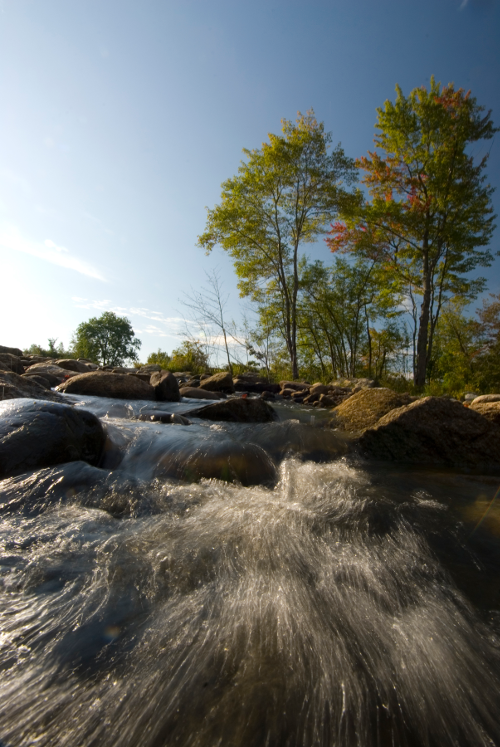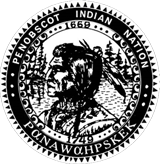Water Quality Standards

Water quality standards are the foundation for protecting rivers, streams, lakes, ponds and wetlands from pollution.
Water quality standards have 3 basic pieces:
- Designating uses of the water body that you wish to protect;
- setting narrative or numeric benchmarks (criteria) that need to be met to sustain those uses; and
- establishing policies and procedures to prevent waters from being degraded by pollutants. These standards are then used for a variety of pollution control programs including setting permit limits for discharges.
Penobscot people have resided upon Penobscot Waters and have depended upon fish, plants, and wildlife from those waters for their physical, cultural, and spiritual survival from time immemorial. On September 23, 2014 at Penobscot Nation General Meeting the Penobscot Nation Water Quality Standards were approved and adopted as Tribal Law to protect, maintain, and improve the quality of Penobscot Waters and to protect the health and welfare of Penobscot people. These standards apply to all Penobscot Waters and to all persons and activities within the Penobscot Nation. The Water Resources Program will be using these standards as its goals while monitoring and managing water quality of Penobscot Waters.
PIN’s Final water quality standards
Click here to download/view a pdf
Response to comments
Click here to download/view a pdf
The Penobscot Nation Water Quality Standards designates the following uses for specific Penobscot Waters:
A: Domestic Water Supply. The water body is used as a water supply for drinking or cooking.
B: Cultural Ceremonial/Primary Contact. The water body is used for activities that may cause the human body to come into direct contact with the water, to the point of submergence and including ingestion. Examples include swimming and ceremonial uses.
C. Secondary Human Contact. The water body is used for activities, such as recreation, that may cause the water to come into direct contact with human skin but normally not to the point of submergence. Examples include fishing and boating.
D. Aquatic Life and Wildlife Habitat. The water body is used by non-domesticated plants and animals, including fish and aquatic insects. The water is used for direct consumption, foraging, habitat, cover, or propagation, and the aquatic ecosystem supports healthy aquatic life, including sensitive indigenous species in all of their life cycles.
E. High-Quality Coldwater Fishery. The water body contains adequate water quality and characteristics that are suitable for the support and spawning of indigenous coldwater fish such as Brook trout, landlocked salmon, and Atlantic salmon or their hybrids.
F. Coldwater Fishery. The water body has a water temperature and other characteristics that are suitable for the support of coldwater fish such as Brook trout, landlocked salmon, Atlantic salmon, or their hybrids.
H. Fish Culture. Water from the water body is used for production of coldwater or warmwater fish in a hatchery or rearing station.
I. Sustenance Fishing. The water body is used for carrying out sustenance fishing and is necessary to provide a sufficient diet of fish to sustain a healthy population of members of the Penobscot Nation.
J. Irrigation. The water body is used for watering agricultural crops and other plants.
K. Livestock and Wildlife Watering. The water body is consumed by livestock, non-domestic animals (including migratory birds), or both for water supply, habitation, growth, or propagation.
L. Industrial Process and Cooling Water Supply. The water body is used in conjunction with the production of goods or services for profit.
M. Hydroelectric power generation. The water body is used in conjunction with the generation of hydroelectric power.
N. Outstanding Tribal Resource Waters. These waters represent a unique sacred and cultural resource of the Penobscot Nation, due for example to their use, their being part of the traditional value system of the Penobscot Indian Nation, or their uncharacteristic beauty. They are therefore given this most protective status to ensure their preservation.
In October, 2014 Penobscot Nation submitted a “Treatment In the Same Manner as a State” (TAS) application to United States EPA to seek approval for the tribe to administer our water quality standards program under the federal Clean Water Act for the Penobscot Indian Reservation. To date EPA has not yet made its determination.
